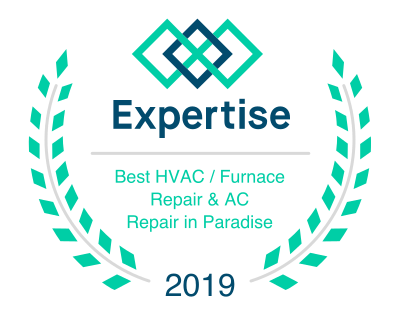Your cute and playful pet, perhaps small in size akin to delicate puppies covered in soft fur, becomes more than just a pet. In addition to being a beloved companion, it also acquires the status of a family member and occupies its own territory within your household. Some dedicated pet owners even go the extra mile – they undertake the job of creating a newsletter to keep friends and family updated about their furry friend’s antics. This realization pertains to every pet owner, conveying that as responsible homeowners and pet owners, you address every type of component in pet care: You shower them with a lot of affection, feed them, provide water, guard against allergies, ensure their skin health and entertain them, perhaps with business-like seriousness or playful inclinations.
Your pet’s joy has a direct impact on your energy levels and happiness. They repay your care with unconditional love, winning over the hearts of many fans. Yet, signs of their affection also manifest in less anticipated ways – through pet-related problems. One of the most common challenges pet owners may face is dealing with the ‘gift’ from your pet: the excessive shedding of fur, and the accompanying allergens.
This gift often feels more like a risk, significantly impacting the temperature and energy bills within your home. The fur, much like tiny, hovering dust particles, ventures into the recesses of your heating, ventilation, and air conditioning (HVAC) systems. Here, it forms a barrier alongside other unwanted elements such as dust and debris, and can cause significant damage to the equipment in your HVAC system, particularly the delicate fins of the compressor.
These challenges deal an undue toll on energy efficiency, considerably increasing your utility bills and necessitating potential repairs if maintenance is neglected. Such a scenario is more than anything a clear indication of the importance of regular care and attention needed for maintaining your HVAC systems. As pet owners, it’s crucial to remember to check the vents, as these can also be blocked by pet hair and dander, contributing to potential issues.
Dangers of Pet Hair And Dander
As your intricate HVAC systems—wires, ducts, air conditioners, heat pumps, etc.—blow warm or cool air into your home, it also takes in unconditioned room air, pulling along with it any present pollutants. Just as the winds would drag leaves through the bushes, your system drags in pollutants including pet hair and dander, dirt, dust, and debris, into the ductwork. They may either settle there or be pushed back out after passing through the unit’s filters. A well-maintained filter equipped with a HEPA filter will catch and remove pet hair and dander, but a filter needing maintenance or replacement may become ineffective. In addition, this creates a serious issue, particularly when your ac has to contend with the added heat from wires that your pets may have tampered with, compelling your HVAC unit to work harder than necessary, generating unnecessary heat and subsequently escalating your monthly utility bill, as the ac struggles to maintain airflow.
Moreover, metal ductwork overdue for a thorough cleaning is an ideal harbor for pet hair and dander, primarily from dogs and cats. Contaminants, including pet fur, settle here, and when your HVAC unit, for instance, the heat pump or air conditioner, restarts, these clinging particles get whisked up into the air circulation through air filters, much similar way to how the persistent odor of pet urine keeps recurring. These factual pieces of information illuminate the importance of understanding the surface of the problem. It’s imperative for homeowners to recognize this impact on their indoor air quality, and implement proper pet-safe methods.
Tips for Managing Pet Contaminants (HVAC tips)
The number one HVAC tip to ensure that pet contaminants inside your home, particularly those affecting your air conditioner and heat pump installation, are kept at a minimum is to have your HVAC unit and its attending vents inspected regularly. Regular heat pump maintenance, cleaning your filters, and having your ductwork cleaned intermittently, remains the key measure. But, while considering a cat or dog’s part in this, other preventive steps can also be acknowledged, such as investing in pet-proof features like outdoor enclosures for your pets to limit the amount of dirt, dust, and debris they carry back into your house. Despite this seeming like a large project, taking the time to make these improvements can greatly improve your home’s air quality.
- Bathe and groom your pets regularly. This helps remove loose hair and dander before it can be sucked into your HVAC system.
- Purchase an air purifier as supplemental protection. An air purifier can be an add-on attachment to your HVAC unit, or it can be a separate unit that operates independently. Air purifiers cycle the air in a room over and over again—removing more and more contaminants such as pet dander, cigarette smoke and mold spores with each pass.
- Vacuum regularly. This helps to remove pet contaminants from soft surfaces such as carpets and furniture.
- Consider replacing carpet with laminate, vinyl or tile. Hard floor surfaces are easier to clean and maintain than carpeting. You may also want to consider replacing loop pile carpeting with a cut pile alternative such as Berber.
- Wash rugs and bedding often to help keep contaminants away.
If you’re worried about the amount of pet hair and dander that may be circulating inside your home, contact us today to learn more about our inspection services. We also offer air filtration services. We are The Cooling Company, and our free online estimator is the perfect tool to help you better understand what you’re up against. Or you can call us at (702) 567-0707. for assistance. We proudly serve the Las Vegas area 24 hours a day, seven days a week. Let us help you rid your home of unwanted pet contaminants today.












